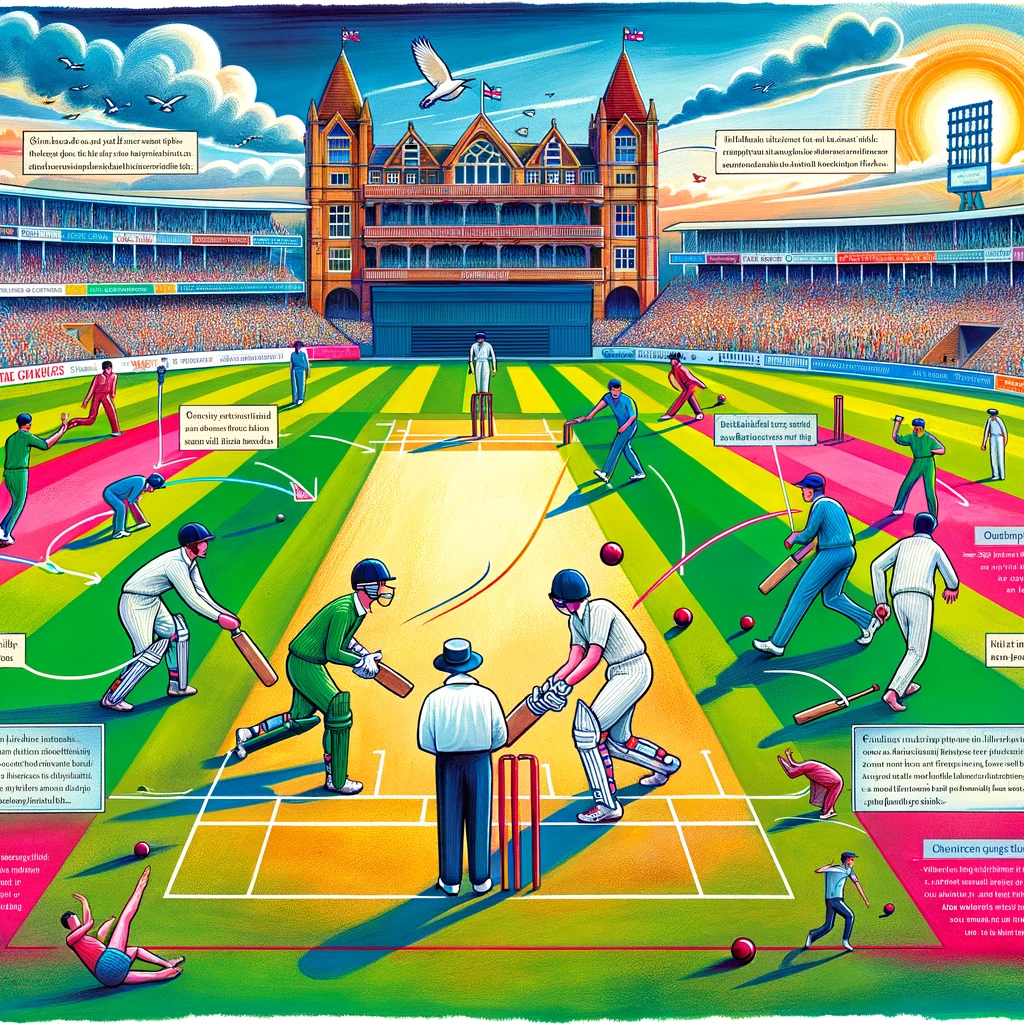Cricket is a popular sport with a rich history, and mastering its essential rules is crucial for any aspiring player or fan. In this comprehensive guide, we will delve into the key rules and concepts of cricket, unravel the intricacies of batting and bowling, and explore the techniques for success in fielding and scoring.
Cricket Basics: Understanding the Key Rules and Concepts
Cricket is a team sport played between two teams of eleven players each. The objective of the game is to score more runs than the opposing team. A run is scored when the batsman hits the ball and successfully runs to the opposite end of the pitch.
The game is divided into innings, with each team having a turn to bat and bowl. The team that scores the most runs at the end of the game wins. A match can last for several hours or even days, depending on the format being played.
In cricket, there are two main formats: Test cricket and limited-overs cricket. Test cricket is the longest format, played over five days, while limited-overs cricket includes One Day Internationals (ODIs) and Twenty20 (T20) matches, which have shorter durations.
Key rules and concepts in cricket include:
- The pitch: The playing area is called a pitch, which is a rectangular strip in the middle of the cricket field. It has two sets of wooden stumps, known as the wickets, at each end.
- Batting: The batsman’s objective is to protect their wicket and score runs by hitting the ball with their bat. They can score runs by running between the wickets or by hitting the ball to the boundary, which earns them four runs.
- Bowling: The bowler aims to dismiss the batsman by delivering the ball towards the wicket. They can achieve this through various types of deliveries, such as fast bowling, spin bowling, or swing bowling.
- Fielding: The fielding team aims to prevent the batting team from scoring runs by catching the ball, stopping boundaries, and running out batsmen.
- Umpires: The umpires officiate the game, ensuring fair play and enforcing the rules. They make decisions on appeals, such as whether a batsman is out or not.
Understanding these key rules and concepts is essential to fully grasp the game of cricket and appreciate its nuances.
Batting and Bowling: Unraveling the Intricacies of the Game
Batting and bowling are two fundamental aspects of cricket that require skill, technique, and strategy. Let’s delve deeper into these intricacies.
Batting
When a batsman takes to the crease, they face the bowler’s deliveries, aiming to score runs and protect their wicket. Let’s explore some key elements of batting:
- Stance and grip: The batsman’s stance and grip on the bat are crucial for balance, control, and shot execution. It’s important to find a comfortable stance and grip that allows for optimal bat control.
- Shot selection: The batsman must choose the appropriate shot based on the delivery. Shots can include defensive strokes, drives, cuts, pulls, and sweeps, among others.
- Footwork: Good footwork is essential to position oneself correctly and play shots effectively. It involves moving the feet into the right position to play the ball with precision and timing.
- Running between the wickets: Batsmen must be quick and efficient in running between the wickets to score runs and avoid run-outs. Communication, agility, and awareness are key in this aspect of batting.
Bowling
Bowling is the art of delivering the ball towards the batsman with the aim of dismissing them. Here are some important aspects of bowling:
- Bowling technique: Bowlers employ various techniques, such as seam bowling, swing bowling, spin bowling, or pace bowling. Each technique requires different skills and execution.
- Line and length: Bowling the ball on the right line and length is crucial to create difficulties for the batsman. The line refers to the direction of the delivery, while the length determines how far the ball bounces.
- Variation: Skilled bowlers often use variations, such as slower balls, bouncers, or yorkers, to deceive the batsman and take wickets.
- Field placements: The captain strategically places fielders in specific positions to maximize the chances of getting the batsman out. This includes positions like slips, gully, mid-wicket, and long-on.
Mastering the intricacies of batting and bowling requires practice, technique, and a deep understanding of the game.
Fielding and Scoring: Mastering the Techniques for Success
Fielding is a crucial aspect of cricket that can significantly impact the outcome of a match. Let’s explore the techniques for success in fielding and scoring:
- Catching: Fielders must possess sharp reflexes and excellent hand-eye coordination to successfully catch the ball. Timing, positioning, and concentration are key factors in this skill.
- Ground fielding: Fielders must be proficient in fielding the ball on the ground, stopping boundaries, and preventing the batsmen from taking easy runs. This involves quick movement, agility, and accurate throws.
- Throwing: Accurate throws are essential for run-outs and preventing batsmen from scoring runs. Fielders must have strong throwing arms and the ability to throw accurately to the wicketkeeper or other fielders.
- Scoring: Scoring in cricket involves keeping track of runs scored by the batsmen and calculating the score. The umpires and scorers work together to ensure an accurate score is maintained throughout the game.
To enhance the readability and understanding of this guide, here is a list summarizing the key points discussed:
- Cricket is a team sport played between two teams of eleven players each.
- The objective is to score more runs than the opposing team.
- The game is divided into innings, with each team having a turn to bat and bowl.
- Key rules and concepts include the pitch, batting, bowling, fielding, and umpires.
- Batting involves stance, shot selection, footwork, and running between the wickets.
- Bowling requires technique, line and length, variation, and field placements.
- Fielding encompasses catching, ground fielding, throwing, and scoring.
Mastering these techniques and understanding the essential rules of cricket is essential for both players and fans. Whether you’re playing the sport or enjoying it from the stands, a comprehensive knowledge of cricket will enhance your experience and appreciation for this beautiful game.
References:



